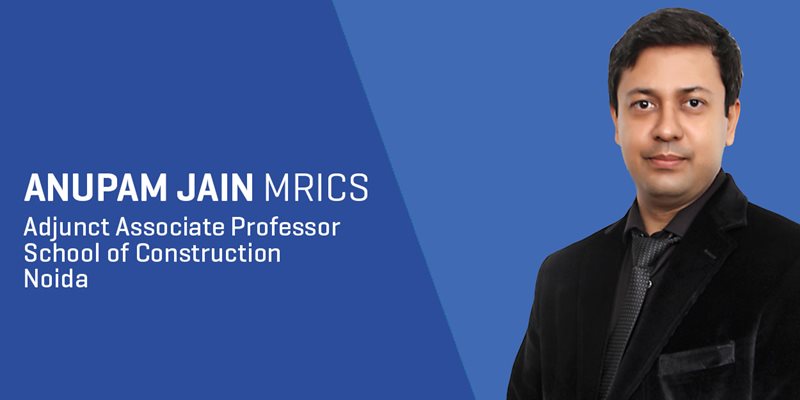Anupam Jain explores how young professionals can incorporate sustainability in their work.
01 January 2017
Expert Talk
Mr Anupam Jain LEED AP, IGBC AP, Principal Consultant at Rationale de Design and Adjunct Associate Professor at the School of Construction, writes about the history of sustainability frameworks and the compelling need for young professionals to champion sustainability at their workplaces and in their work.

Today there is a growing emphasis on the performance of a building as people are no longer satisfied with just good looking buildings. This is also due to growing awareness about the perils of climate change that frequently make headlines in international media.
Green buildings is a term given to buildings that conserve resources such as energy, water and waste during their design, construction, operations, maintenance, and demolition stages. Qualified professionals are needed at each stage to steer the implementation of measures that can improve the sustainability of making new buildings.
For instance green building can increase the value-for-money proposition for investors and better serve the occupants for whom a building is constructed.
Numerous green building rating systems have come up over the past two decades that provide frameworks for compliance and third party certification. These are no longer just green building frameworks.
By definition, sustainability embraces the social, economic and environmental aspects of a project. Frameworks such as LEED©, GRIHA, IGBC, BREEAM and CASBEE are geared towards the technical aspects of green building that are fed from numerous technical committees, universities and research organisations that specialize in building science research.
Frameworks such as ISO 9001, 14001 and 50001 emphasize the process of quality management, environmental management and energy management respectively.
Also, another parallel track of sustainability that has silently been used in the corporate world is frameworks that talk of organisational sustainability. These include GRI and CDP for creating a sustainability report for an organisation that communicates to a company’s shareholders the emphasis placed on a fair workplace, anti-corruption policies, a no child labour policy and numerous such social and environmental initiatives that are quantified economically by indicating the spends for each of them.
The Barbados Programme of Action for the Sustainable Development of Small Island Developing States (BPOA-SIDS) in 1994 took forward the recommendations of Agenda 21, which in turn was the outcome of the Earth Summit in Rio in 1992, to address proactive disaster management.
This was followed by The Mauritius Strategy for the Further Implementation of the Programme of Action for the Sustainable Development of Small Island Developing States (MSI-SIDS) in January 2005. RICS and the School of Built Environment themselves are signatories to the United Nations’ Principles for Responsible Management Education (PRME) and other similar policy frameworks that believe in responsible education for management students and their roles and opportunities in the Construction industry.
It is through the integration of such different frameworks that a professional can begin to understand the complexity of decision making in the construction industry. It is then a matter of getting enough practice or hands-on experience to make this process intuitive. This is what we want our students to develop during their time at the School.
However, this by itself is not enough. During the early stages of their careers, young management professionals find it difficult to steer outcomes in the industry. It is a matter of their credibility, which they are in the process of establishing, as well as their influence. The latter is something they can work on from day one as well. Being a sustainability champion in an organisation is a matter of how many people see you as such and are willing to work with you in taking it further in their day-to-day work.
Young professionals have to work from the bottom up to develop sufficient interest and up-skilling in the organisation. This requires lateral thinking and collaboration –both within and outside work. There are many industry bodies that exist today in green building, sustainability and other specialized aspects of environmental management that one may be interested in, and who can support your efforts.
Formal activities such as paper presentations, attending conferences and writing magazine articles are one way of showing the value of your thought process to your organisation’s management. But it is the informal activities with your colleagues that can generate a sense of excitement and commitment towards sustainability. This can include participation in activities such as the recently concluded World Green Building Week celebrations at the School, company retreats, visits to interesting projects, interactions with industry leaders, book-readings, and any other fun activities that may interest a group. This helps in raising awareness for the group and without doubt your acceptance and influence.
It is often a balance of formal and informal combined over a period of time has the potential to make contributions to the culture of an organisation. And this is important for decision making in the industry. For right now, there is lack of sufficient buy-in from industry, end-users as well as others and we need to change that. Built environment needs sustainability and we hope to produce enough change agents in the School who can help bring a change in the perception and practice of construction in the industry. Business as usual is not an option. When we understand this we will realize what is at stake and how late we are already.